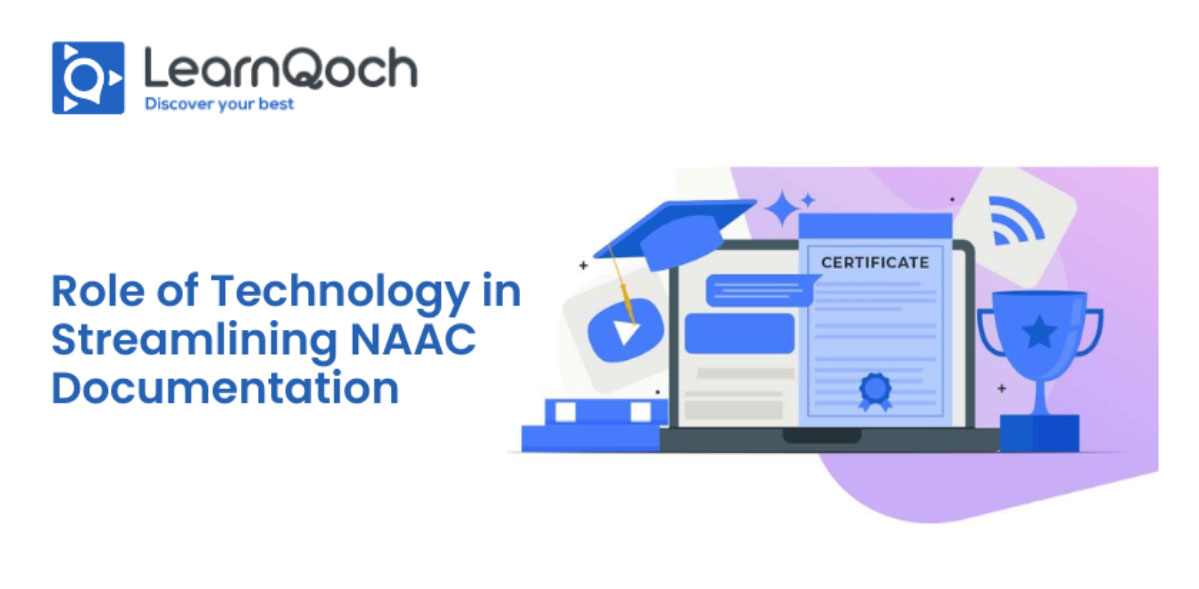Role of Technology in Streamlining NAAC Documentation
In the realm of education, accreditation from reputable bodies like the National Assessment and Accreditation Council (NAAC) serves as a hallmark of quality and excellence. While achieving and maintaining accreditation is a multifaceted process, one of the crucial elements is the documentation of various aspects of institutional functioning. In this blog post, we will explore the transformative role of technology in streamlining NAAC documentation, making the accreditation journey more efficient, accurate, and responsive to the evolving needs of educational institutions.
The Complexity of NAAC Documentation
NAAC accreditation demands a comprehensive and well-documented representation of an institution’s policies, practices, and outcomes. The documentation process covers diverse areas such as curriculum design, faculty development, infrastructure, governance, and more. As institutions aim for higher accreditation grades, the documentation requirements become more intricate, requiring a strategic approach to organization and presentation.
One of the biggest challenges in getting NAAC accreditation is documentation. NAAC requires a vast amount of documentation, including institutional data, self-assessment reports, academic and administrative audit reports, and student feedback. Preparing these documents can be time-consuming and requires a lot of effort.
LearnQoch, an integrated ERP & LMS Software, can help institutions store and manage their documents securely. It has a document management system that allows institutions to create, store, and share documents easily. The software also has a self-study report module that can help institutions to prepare their self-study report.
Challenges in Manual Documentation
Historically, institutions relied heavily on manual documentation processes, involving a plethora of paperwork, spreadsheets, and cumbersome filing systems. This approach posed several challenges:
- Time-Consuming: Manual documentation is time-intensive, diverting valuable resources from core educational activities.
- Error-Prone: Human errors are inherent in manual processes, potentially compromising the accuracy of the information presented during NAAC evaluations.
- Version Control: Managing multiple versions of documents, updates, and revisions becomes a logistical challenge without a centralized system.
- Limited Accessibility: Physical documents and traditional filing systems restrict accessibility, hindering collaboration among different departments.
How LearnQoch can help in NAAC Documentation
Advancements in technology have brought about a paradigm shift in the way institutions approach documentation for accreditation purposes. Here’s how technology, when strategically implemented, can streamline NAAC documentation:
1. Centralized Document Management Systems:
Modern Document Management Systems (DMS) provide a centralized platform for storing, organizing, and retrieving documents. This eliminates the need for scattered physical files and enables institutions to have a single repository for all accreditation-related documents. These systems often include version control features, ensuring that the most up-to-date information is readily available.
2. Electronic Portfolios:
Transitioning from traditional binders to electronic portfolios simplifies the presentation of documentation during NAAC evaluations. Electronic portfolios allow institutions to showcase evidence of compliance, including reports, policies, and outcomes, in a more organized and visually appealing manner. This not only enhances the evaluators’ experience but also makes it easier for institutions to navigate the accreditation process.
3. Collaborative Tools for Teamwork:
Institutions are complex ecosystems involving multiple departments and stakeholders. Collaborative tools, such as cloud-based platforms and project management software, facilitate teamwork and streamline the collaborative aspects of documentation. These tools enable real-time collaboration, ensuring that everyone involved has access to the latest information and can contribute seamlessly to the documentation process.
4. Automation of Routine Processes:
Automation technologies can be employed to streamline routine processes involved in documentation. For example, workflow automation can be implemented to route documents for approvals, track progress, and send notifications for upcoming deadlines. This not only reduces administrative burdens but also minimizes the risk of overlooking critical steps in the documentation process.
5. Data Analytics for Insights:
Technology enables institutions to go beyond mere documentation and extract valuable insights from the data collected. Data analytics tools can help identify trends, assess the impact of implemented policies, and demonstrate the effectiveness of various initiatives. These insights not only contribute to accreditation efforts but also inform strategic decision-making within the institution.
6. Mobile Accessibility:
In an era of remote work and flexible schedules, mobile accessibility is paramount. Accreditation documentation platforms that offer mobile apps or responsive web interfaces empower users to access and contribute to documentation from anywhere, fostering a more agile and responsive approach to accreditation requirements.
7. Integration with Existing Systems:
To maximize efficiency, technology solutions for NAAC documentation should seamlessly integrate with existing institutional systems, such as Enterprise Resource Planning (ERP) and Learning Management Systems (LMS). This integration ensures that relevant data is readily available for documentation purposes, reducing redundancy and enhancing data accuracy.
8. Digitization
The process of documentation can be simplified by digitalization. Institutions can use document management software to store and manage their documents. This will not only make the documentation process easier but will also ensure that the documents are easily accessible and secure.
ERP (Enterprise Resource Planning) and LMS (Learning Management System) software are two essential tools that can help organizations with digitization. Both software solutions can be used to streamline processes, automate routine tasks, and enhance communication and collaboration among stakeholders.
By leveraging the power of technology, institutions can improve their performance, gain credibility, and provide a better learning experience for their students. Therefore, institutions must embrace digital solutions such as LearnQoch to meet the challenges of NAAC accreditation and succeed in the competitive higher education landscape.
LearnQoch has built an ERP & LMS system that simplifies and automates lengthy processes.
It helps institutions store the various institution reports – admission, program details, student reports, etc and generates various
reports related to NBA & NAAC Accreditation.
To enhance Accreditation-related data & enhance the quality assurance standards of your institution, choose LearnQoch Software.
Call us at +91 84519 01079 or email at info@learnqoch.com

